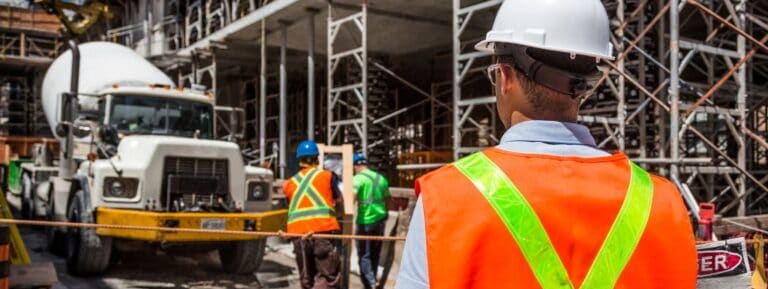On 10 November 2017, the Building Industry Fairness (Security of Payment) Act 2017 received royal assent, affecting every stakeholder in the building and construction industry in Queensland.
Although the key provisions of the Act do not come into force until a date to be proclaimed by the Queensland Government, it is anticipated that the major reform to the operations of the Queensland building and construction industry will take effect from early 2018.
The controversial changes were enacted following a six month consultation with the industry stakeholders and an intensive advertising campaign focusing primarily on the project bank accounts as a mechanism for a ‘fair’ recovery of payments for the tradie subcontractors. (1)
The Act consolidates the current Queensland security of payment legislation (2) and introduces some important amendments to the Queensland Building and Construction Commission Act 1991, particularly in relation to tougher measures in prosecuting unlicensed building work and targeting insolvency in the building industry. We will be discussing the changes to the QBCC Act in a separate publication, so watch this space.
Project Bank Accounts
The mandatory use of project bank accounts will be gradually phased in over the next two years. From the early 2018, all Queensland Government construction projects of the value between $1 million and $10 million will be covered by the operation of the Act. From 1 January 2019, all of the construction projects above $1 million including the private, 3 commercial and government sectors will be required to operate the compulsory project bank accounts. Separate contracts for building work at the adjacent sites for a combined value of over $1 million between the same parties will be taken to be a single contract and thus also covered by the project bank account requirements.
Although a large body of the procedural matters will be addressed by a regulation, which is yet to be drafted, we have summarised the most important provisions with respect to the project bank accounts below.
Despite the flavour of the earlier advertising campaign and the Government’s various press releases, (4) only the head contractors and tier one subcontractors (5) will be covered by the new security of payment regime through the operation of project bank accounts, leaving the end suppliers and subsequent subcontractors out.(6) However, these categories of the building industry operators will still be able to recover payments from their employers through the usual channels, like the payment claims and subcontractors’ charges.
Each of the project bank accounts will be utilised to hold on trust only the following amounts:
- payments by the principal to the head contractor under the building contract;
- payments to a subcontractor from the head contractor under the first-tier subcontract;
- retention monies withheld under the first-tier subcontract; and
- monies the subject of a payment dispute.
This system will necessitate the operation of three separate trust accounts (7) for each project, with the head contractor being the trustee and beneficiary of these accounts, while each of the first-tier subcontractors are to have a beneficial interest in the amounts held on trust. The accounts must be operated by a financial institution within Queensland and be generally opened within 20 business days after the head contractor enters into a first-tier subcontract.
There are strict requirements for the operation of the project bank accounts, in particular, deposits and withdrawals only by electronic transfer, withdrawals and transfers between the accounts only by using a payment instruction given to the financial institution.
The head contractor will not be entitled to pay itself unless sufficient funds are held in the trust account to cover payments due to the subcontractors and must cover any short fall in the trust funds, which is unpaid by the principal. If there are insufficient funds in the account the head contractor must pay all of the subcontractors to whom payments are due on a pro rata basis.
There is an express exclusion of the trust account funds from the creditor claims (other than the subcontractor beneficiaries), as well as a prohibition on investment of these funds other than interest earned on each of the accounts. The head contractor is unable to recover the costs of the administration including the bank fees from the funds held in the project bank accounts or from the subcontractor beneficiaries.
Payment claims
The Act establishes a new process for progress payments and associated dispute resolution, which is largely based on the modified provisions of the Building and Construction Industry Payments Act 2004. As opposed to the project bank account provisions, this process is applicable to all suppliers and subcontractors who contribute to a construction contract and the definitions of construction work and the related goods and services for the purposes of the payment claims are very wide.
The new procedure for submission of the payment claims is somewhat more favourable towards the claimants (similar to the old regime prior to the 2014 amendments).
The requirements for the payment claim remain unchanged, although there is currently no express prerequisite for stating that a payment claim is made under the Act (similar to the security of payment legislation in NSW). However, further requirements as to the form and content may be enacted under a regulation for both the payment claim and the payment schedule.
An additional final reference date is added for terminated contracts.
If the construction contract does not provide for a due date of a progress payment, the due date will become the 10th business day from the date a payment claim is made.
A payment claim must generally be given within 6 months of carrying out the work or the supply of the related goods and services, unless provided for otherwise in a construction contract. Although only one payment claim is to be made for each reference date, any amounts from previous payment claims may be included in the subsequent claims.
The payment schedule must be provided by no later than 25 business days after the day the payment claim is given or earlier if the shorter period is specified under the relevant construction contract. If the respondent fails to give the payment schedule, as prescribed, the amount in the payment claim becomes payable by the due date for the relevant progress payment, which means that if the contract is silent as to the due date, the respondent is immediately liable for the full amount of the payment claim.
Penalties, as well as disciplinary action under the QBCC Act, now apply for a failure to provide a payment schedule in response to a payment claim.
Dispute Resolution Process
If the respondent does not issue a payment schedule and fails to pay the amount of the payment claim, the claimant may elect to recover the claim as a debt through court action or to apply for adjudication.
There is a further entitlement for the claimant to suspend work with notice upon the conditions specified in the Act.
The claimant may apply for adjudication within the following time frames:
for a failure to deliver the payment schedule: 30 business days after the later of the due date for the relevant progress claim or the last day when the respondent could give the payment schedule.
for a failure to pay the amount stated in the payment schedule: 20 business days after the due date for the relevant progress payment; and
for a dispute with respect to the amount stated in the payment schedule: 30 business days after the claimant receives the payment schedule.
The respondent will be unable to submit an adjudication response if no payment schedule was given with respect to the payment claim. Any adjudication response also may not include any new reasons, which were not included in the payment schedule.
The adjudication response must be given to the adjudicator within the following time frames (‘response date’):
for a standard claim within the later of 10 business days after receiving a copy of the adjudication application or 7 business days after receiving the adjudicator’s notice that the adjudication application was accepted.
for a complex claim (over $750,000 excl GST) 15 business days after receiving a copy of the adjudication application or 12 business days after receiving the adjudicator’s notice that the adjudication application was accepted. These timeframes may be further extended at the discretion of the adjudicator for up to 15 additional business days upon application (which must be made within a specified time limit).
After the adjudication response date (which will apply as specified above regardless of whether the respondent is entitled to give the adjudication response), the adjudication decision must be made within 10 business days for a standard claim and 15 business days for a complex claim respectively.
As an alternative to the adjudication process, the claimant may give a 5 business days’ warning notice to the respondent of the intention to commence court proceedings to recover the payment claim. Such notice must be given within 20 business days from the due date of the relevant progress payment. The claimant will then be able to apply for judgment provided that the court can be satisfied that the progress payment was not paid by the due date and that the payment schedule was not given (if applicable). The respondent will be unable to bring a counterclaim or any defence with respect to the matters arising out of the relevant construction contract in those proceedings (similar to the old regime prior to the 2014 amendments).
Subcontractors’ Charges
The provisions of the Subcontractors’ Charges Act 1974 appear to have been adopted with little change. The most notable variation however is the inclusion of the mandatory response period to a claim of charge within 10 business days of service of the claim. Further, a charge under Chapter 4 of the Act will not attach to the funds held in the project bank accounts, which means that from early 2018 the subcontractor’s charges are likely to be only effectively utilised by the subcontractors below the first tier under a building contract. If the claim of charge is issued, the claimant will be unable to enforce a progress claim or to initiate proceedings under Chapter 3 of the Act unless the claim of charge is withdrawn.
Further observations
The Act provides the QBCC with an active role as a watchdog for compliance including, for example, audit of the project bank accounts, registration and administration of the adjudicators and processing of the various hefty fines and penalties under the Act. Strict compliance is anticipated to be enforced, given that imprisonment terms apply to the offences against several provisions of the Act. However, it is yet to be clarified by regulation as to due processes for imposing those penalties.
Curiously, the Act contains a provision for a compulsory review of the reform by the minister to be commenced no later than 1 September 2018, which indicates that the new law is in a live test mode for now.
These changes will affect every stakeholder in the building and construction industry in Queensland. The above information is intended only as a selective overview of the provisions of the Act and should not be interpreted or relied upon for legal advice.
For further information please contact our construction team on (07) 3009 8444.
1 For example, TV commercial from Queensland Department of Housing and Public Works published on Youtube on 1 February 2017.
2 Repeal of the Building and Construction Industry Payments Act 2004 and the Subcontractors’ Charges Act 1974.
3 The contract for construction of three or less residential dwellings and associated structures is currently excluded from this requirement.
4 For example, Premier’s and Minister’s statement on 30 November 2016 published by the Queensland Government.
5 The relevant tiers of subcontracts are defined in s 6 of the Act.
6 With the exception of second-tier subcontractors, in the circumstances where the head contractor and the first-tier subcontractor are related entities – Part 2 Division 3 of the Act.
7 To be opened and maintained by the head contractor.



